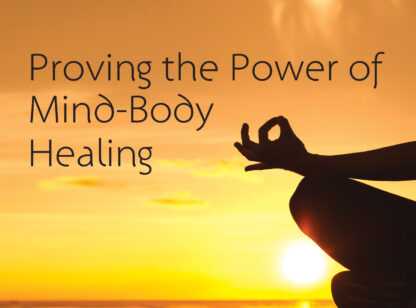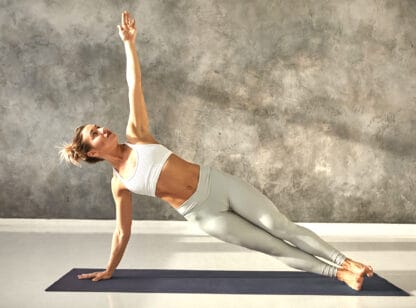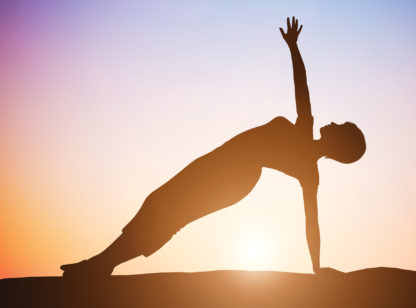“When the breath wanders the mind also is unsteady. But when the breath is calmed the mind too will be still, and the yogi achieves long life. Therefore, one should learn to control the breath.”
—Svatmarama, Hatha Yoga Pradipika
The body can go weeks without food, and days without water or sleep, but can survive only minutes without air. In yoga, this vital element is referred to as “praya” or “life-force” and the practice of breathing is referred to as pranayama meaning “life-force control.”[sup]1[/sup] Yoga participants work to adopt new breathing habits.
 Referred to as “yogic breathing,” the tangible benefits of the full yogic breath are vast and include that it releases acute and chronic muscular tensions around the heart and digestive organs; helps sufferers of respiratory illnesses such as asthma and emphysema to overcome the fear of shortness of breath; increases lung capacity; encourages proper nervous stimulus to the cardio-vascular system; dramatically reduces anxiety; and improves detoxification.[sup]2[/sup]
Referred to as “yogic breathing,” the tangible benefits of the full yogic breath are vast and include that it releases acute and chronic muscular tensions around the heart and digestive organs; helps sufferers of respiratory illnesses such as asthma and emphysema to overcome the fear of shortness of breath; increases lung capacity; encourages proper nervous stimulus to the cardio-vascular system; dramatically reduces anxiety; and improves detoxification.[sup]2[/sup]
A lot of us are chest breathers, breathing shallow, with our chests heaving up and down, rather than deep breathing through our diaphragms. Yoga practice teaches you to refocus your breathing and bring air into the lowest part of your lungs, exercising your diaphragm and enhancing your breathing capacity. It helps to relax the mind and body, massages your internal organs, calms emotions and induces restful sleep.
Bikram yoga, also known as Hot Yoga, takes place in 104-degree heat with 40% humidity. According to Denise DuBarry Hay, co-owner of Bikram Yoga University Village in Palm Desert, this type of yoga aides in breathing practice by “allowing muscles and lungs to stretch more easily and safely. As Bikram says, ‘you would never attempt to bend a cold candle, it will break. You must warm it up and then you can slowly reshape it.’ The same principle applies to your body.” She goes on to say that, “The humidity in a Bikram class adds moisture to your lungs and skin which is essential in the dry desert. Breathing dry air can create tiny fissures in nasal passages and membranes allowing bacteria into your bloodstream causing illness. The benefits of breathing humidified air include keeping the throat and nasal passages clear, aiding in the transfer of oxygen to the blood system, and inducing a good, healthy sweat which helps detoxify the entire body”.
There are many forms of yogic breathing for different purposes, such as rib cage breathing, complete breathing, alternate nostril breathing, and ujjayi (ooh-jai-ee) breath.[sup]3[/sup] We unconsciously breathe over 23,000 times a day[sup]4[/sup] and because our respiratory system has such a big role in our overall health, the goal to have more control over it makes perfect sense. Namaste!
Cindy Burreson has worked in the health and fitness industry for over 15 years as a national fitness competitor, personal trainer, and owner of a nutrition store. She holds a certification in nutrition and worked for both MET-Rx and PR Ironman Bar. Bikram Yoga University Village can be reached at 760.346.2988.
References: (1) www.americanyogaassociation.com; (2) www.healthandyoga.com- “Learn Breathing…the Yoga Way”; (3) www.yogaforbeginners.com; “Yoga Breathing”














































Comments (0)